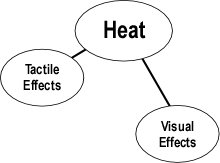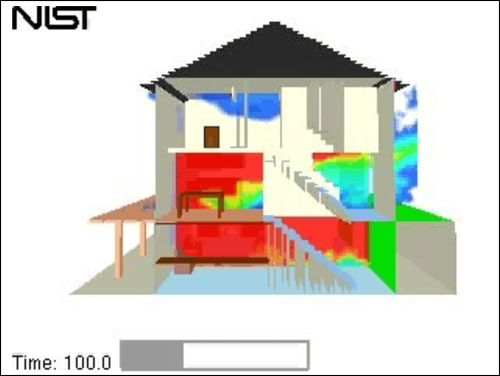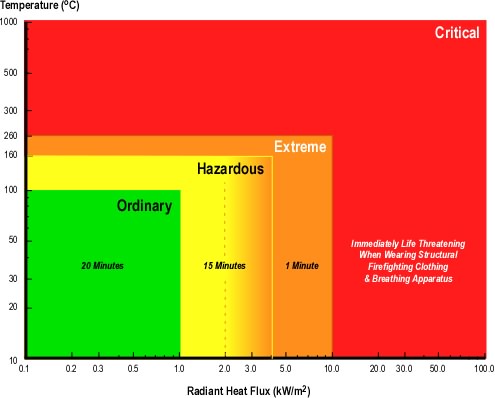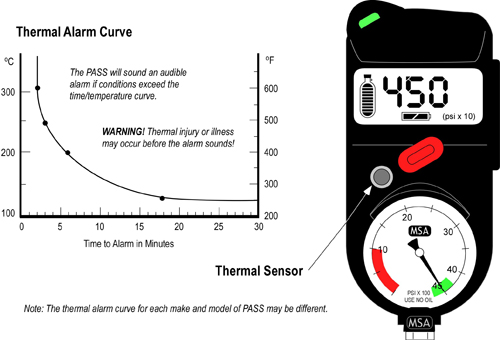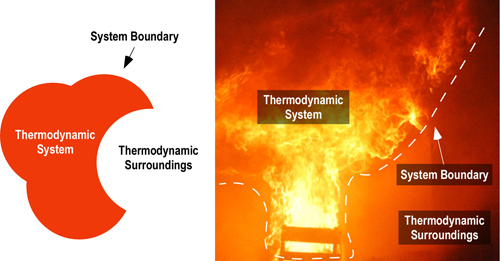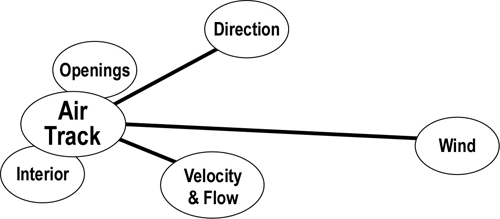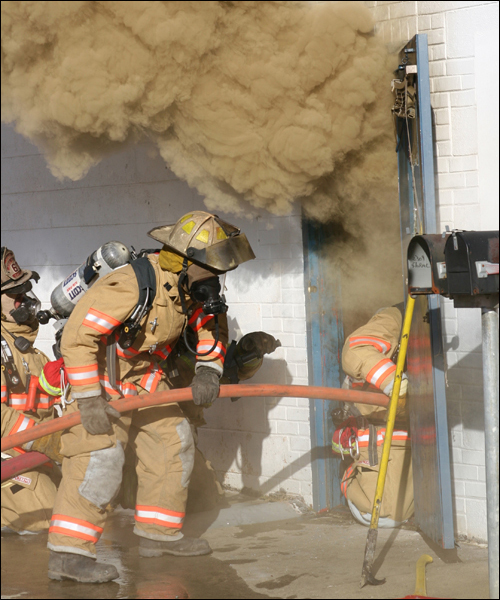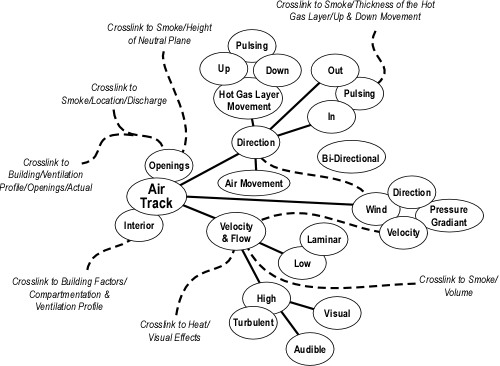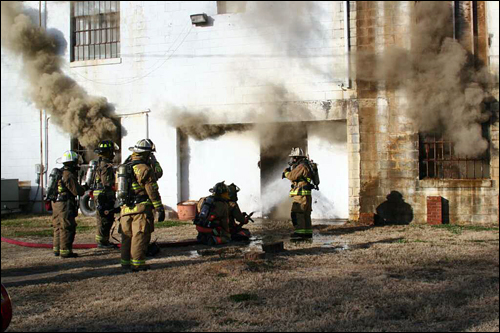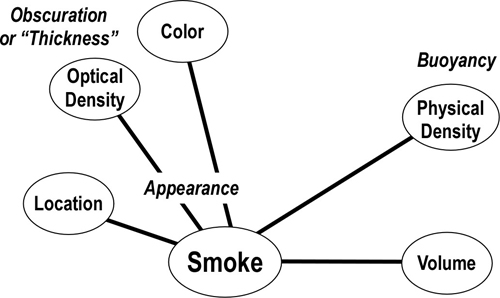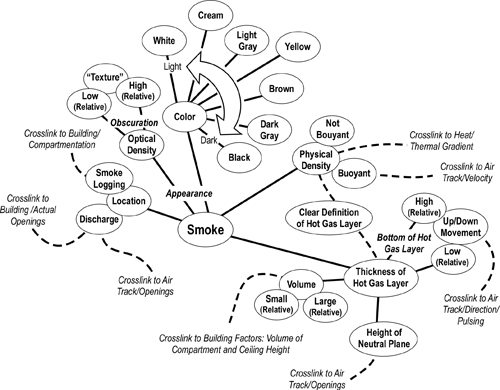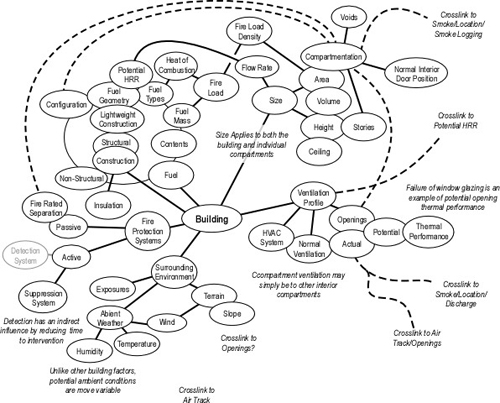Reading the Fire 9
Monday, August 24th, 2009As discussed in prior Reading the Fire posts and the ongoing series examining fire behavior indicators (FBI) using the B-SAHF (Building, Smoke, Air Track, Heat, and Flame) organizing scheme, developing proficiency requires practice. This post provides an opportunity to exercise your skills using three video segments shot during a commercial fire. In addition to practicing your skill in reading the fire, use these video clips to help develop or refine your smoke indicators concept map (see Reading the Fire: Smoke Indicators).
Commercial Fire
The Lake Station (IN) Fire Department was dispatched to a reported structure fire in the vicinity of the American Legion Hall on Central Avenue. Responding companies found a commercial building with fire and smoke showing at the intersection of Central Avenue and Howard Street.
Download and the B-SAHF Worksheet.
While the video clip of this incident does not allow you to walk around the building and observe fire conditions, Google maps street view allows you to view all sides of the building. If you haven’t used street view, have a look at the following Google Street View Tutorial.
Perform a “walkaround” by clicking on the following link to view the building involved at this incident: 1691 Central Ave, Lake Station, IN. Note: Radio communication in the video clip identifies the Incident Commander as “Howard Command”. However, for this activity, I have identified Central Avenue as the A Side of the involved building. Click on the arrows to move east on Central Avenue and move and adjust the compass rose to look at Side D. Move back along Central Avenue and then go down Howard Street, again adjusting the compass rose to look at Sides B and C. After your “walk around”, complete the Building Factors segment of the B-SAHF Worksheet.
The video clip of this incident begins with the view of Side B from the A/B Corner prior to the arrival of the first engine company. Watch the first 60 seconds of Video Segment 1. Consider the information provided in this segment of the video clip. First, describe what you observe in terms of the Building (add to what you have done so far), Smoke, Air Track, Heat, and Flame Indicators and then answer the following five standard questions:
- What additional information would you like to have? How could you obtain it?
- What stage(s) of development is the fire likely to be in (incipient, growth, fully developed, or decay)?
- What burning regime is the fire in (fuel controlled or ventilation controlled)?
- What conditions would you expect to find inside this building?
- How would you expect the fire to develop over the next two to three minutes?
Watch the next three minutes of the video and identify if, and how conditions change from the beginning of the clip until the first line is placed in operation (at approximately 04:00).
Watch the next 2 minutes 30 seconds until the firefighters make entry through the door on Side A (at approximately 06:30).
- What conditions would you expect to find inside this part of the building?
- How would you expect the fire to develop over the next two to three minutes?
Watch the remainder of the video clip.
Important: While not related to Reading the Fire, you likely heard the Personal Alert Safety System (PASS) device sounding through much of the incident. While PASS devices can (and often are) accidentally activated, continuous sounding of a PASS indicates a firefighter in distress. While this was not the case in this incident, failure to silence PASS devices that are accidentally activated desensitizes firefighters to this important audible signal.
Remember the Past
August 1994 saw the loss of two company officers and a firefighter in three separate incidents involving extreme fire behavior. Rapidly changing fire conditions are a threat to firefighters working in career staffed, urban fire departments and volunteer departments serving small communities.
August 7, 1994
Captain Wayne Smith
Fire Department of the City of New York, New York
On August 7, Captain Wayne Smith of the New York City Fire Department was critically injured while conducting search and rescue operations on an upper floor of a building when he was trapped by high heat and heavy smoke conditions. Captain Smith was burned over 40 percent of his body and received severe smoke inhalation injuries to his lungs. He died on October 4 from his injuries. Fourteen other firefighters were injured in the blaze. Initial operations were hampered by a faulty fire hydrant across the street from the building.
August 8, 1994
Sergeant Craig Drury
Highview Fire District, Kentucky
On August 8, Sergeant Craig Drury of the Highview (KY) Fire District was caught in a flashover while making entry into a single story house. Sgt. Drury suffered severe burns to his lungs that eventually caused his death. The fire was started by an arsonist.
August 27, 1994
Firefighter Paul MacMurray
Hudson Falls Volunteer Fire Department, New York
On August 27, Firefighter Paul MacMurray of the Hudson Falls (NY) Volunteer Fire Department responded as part of an engine company to a fire on the first floor of in a three story hotel. Assigned to search for and rescue occupants on the second floor, MacMurray and another firefighter successfully evacuated several victims while attempts to extinguish the fire were initiated below them. Upon their return to continue the search, conditions quickly changed from a light haze of smoke to black smoke with high heat conditions. MacMurray and his partner became separated in their attempt to locate the stairwell and get out of the building. The other firefighter made several efforts to locate MacMurray, but was forced to retreat due to untenable conditions. Several rescue efforts were made but heavy fire conditions eventually forced the evacuation of all fire personnel to defensive positions as the entire structure burned. MacMurray’s body was recovered the following day. The fire was of incendiary origin.
Ed Hartin, MS, EFO, MIFIreE, CFO



